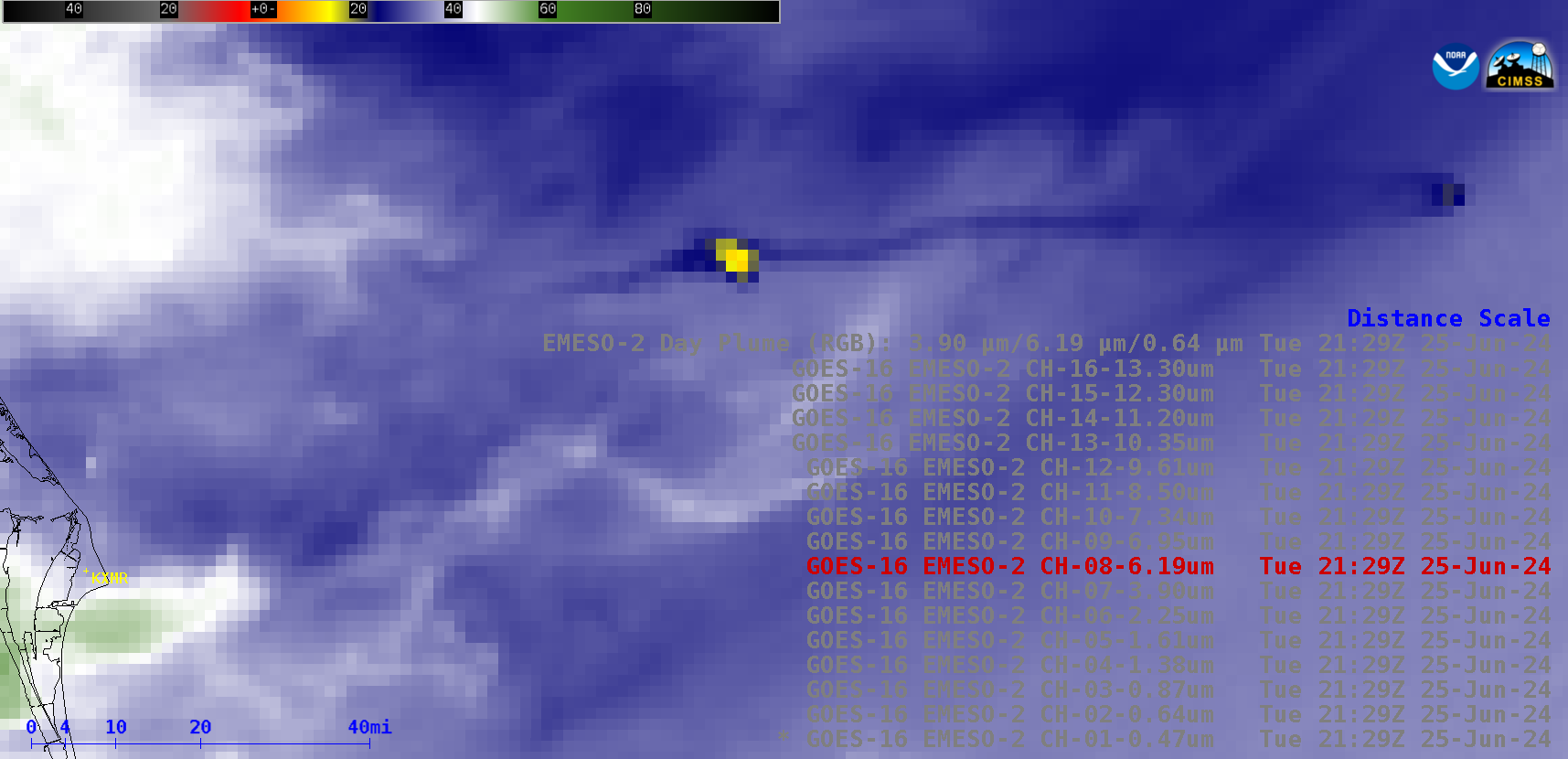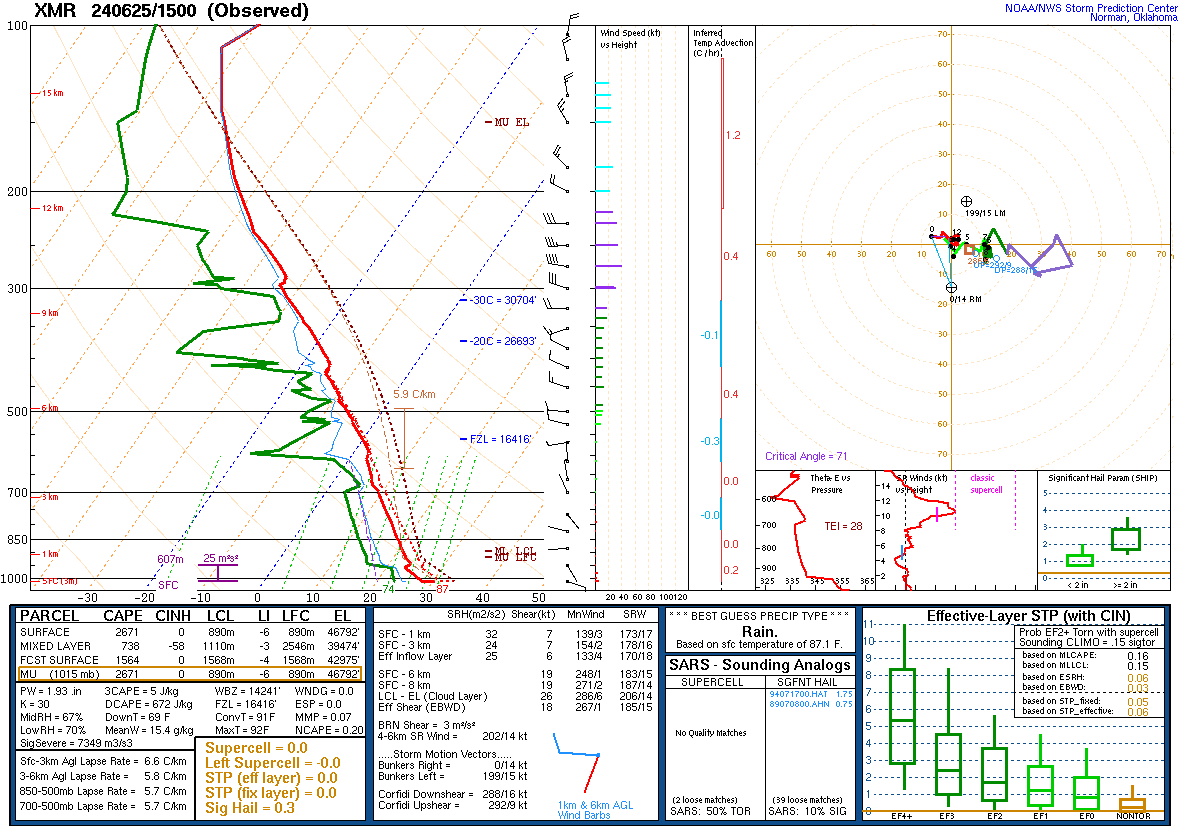Satellite signatures of the GOES-U launch, from both GOES-16 and GOES-18

Stepped sequence of 1-minute GOES-16 images from all 16 ABI spectral bands, plus a Rocket Plume RGB; KXMR denotes the location of the Cocoa Beach rawinsonde site [click to play animated GIF | MP4]
30-second images from GOES-18 (GOES-West) are shown below.

Stepped sequence of 30-second GOES-18 images from all 16 ABI spectral bands, plus a Rocket Plume RGB; KXMR denotes the location of the Cocoa Beach rawinsonde site [click to play animated GIF | MP4]

1-minute GOES-16 Visible/Infrared Sandwich RGB images with/without an overlay of GLM Flash Extent Density; KXMR denotes the location of the Cocoa Beach rawinsonde site [click to play animated GIF | MP4]
Re-entry
The GOES ABI was able to glimpse the booster rockets re-entry as well, from both GOES-East and -West meso-scale sectors.
The same loop as above, minus the red and white circles. These loops were created by T. Schmit, NOAA/NEDIS/STAR.


